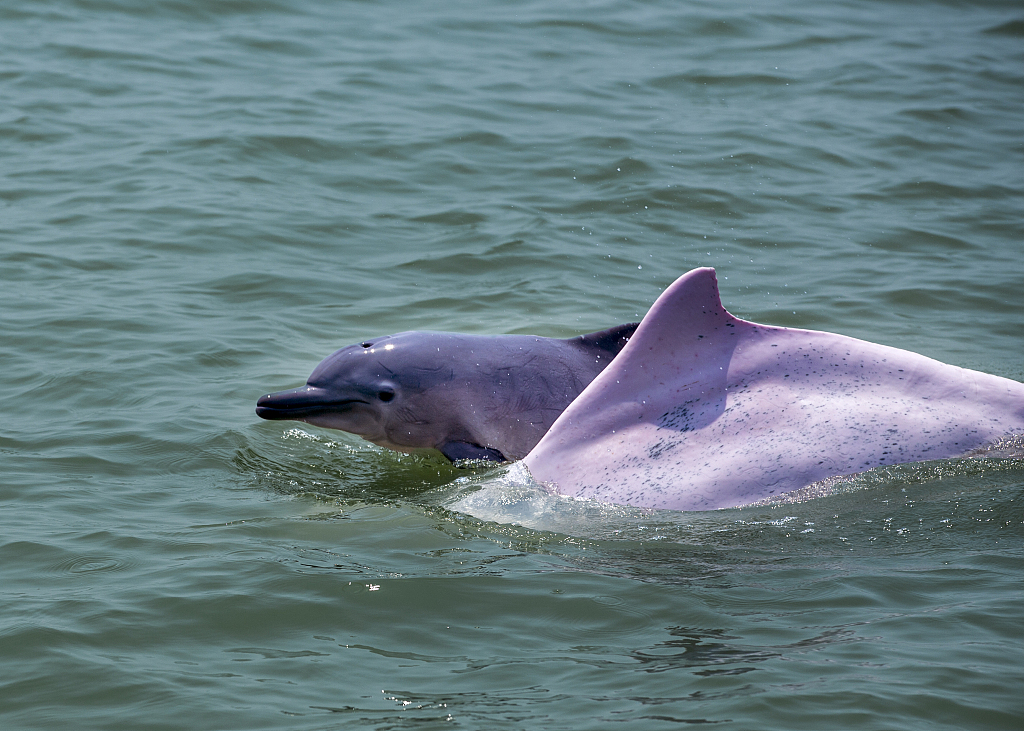
A group of Chinese white dolphins rise to the surface in Sanniang bay in Qinzhou City, south China's Guangxi Zhuang Autonomous Region, on April 21, 2020. /CFP
A group of Chinese white dolphins rise to the surface in Sanniang bay in Qinzhou City, south China's Guangxi Zhuang Autonomous Region, on April 21, 2020. /CFP
Proclaimed by the United Nations, the International Day for Biological Diversity (IBD) is observed each year on May 22 to increase understanding and awareness of biodiversity issues. The slogan for this year's edition is "From Agreement to Action: Build Back Biodiversity," a theme that urges the world to take measures in support of the historic Kunming-Montreal Global Biodiversity Framework agreed at the 15th meeting of the Conference of the Parties (COP15) to the UN Convention on Biological Diversity.
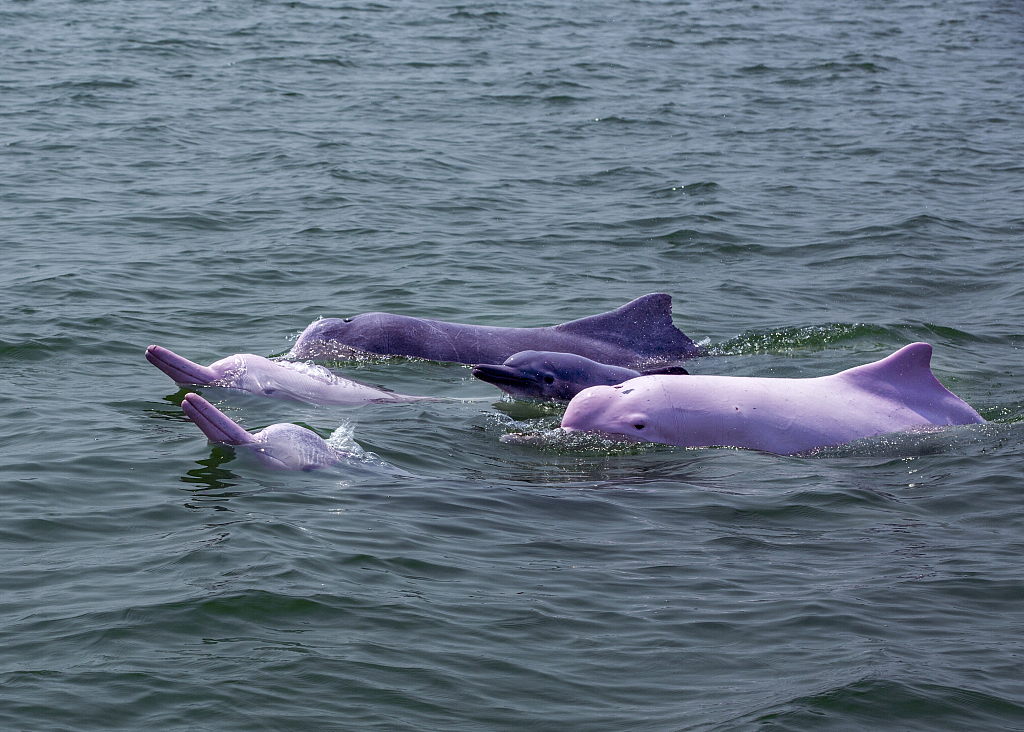
A group of Chinese white dolphins rise to the surface in Sanniang bay in Qinzhou City, south China's Guangxi Zhuang Autonomous Region, on April 21, 2020. /CFP
A group of Chinese white dolphins rise to the surface in Sanniang bay in Qinzhou City, south China's Guangxi Zhuang Autonomous Region, on April 21, 2020. /CFP
Counted as having played a leadership role in COP15, a well acclaimed "Paris moment" for nature, China has always participated in biodiversity protection, and has always been sharing with the world what it has done for the conservation and protection of biodiversity. Thanks to the consistent efforts made to protect wild animals and their habitats and boost the in-situ and ex-situ conservation of wild plants, China has witnessed an increasing number of appearances of some of the country's endangered species in recent years, among which is the Chinese white dolphin.
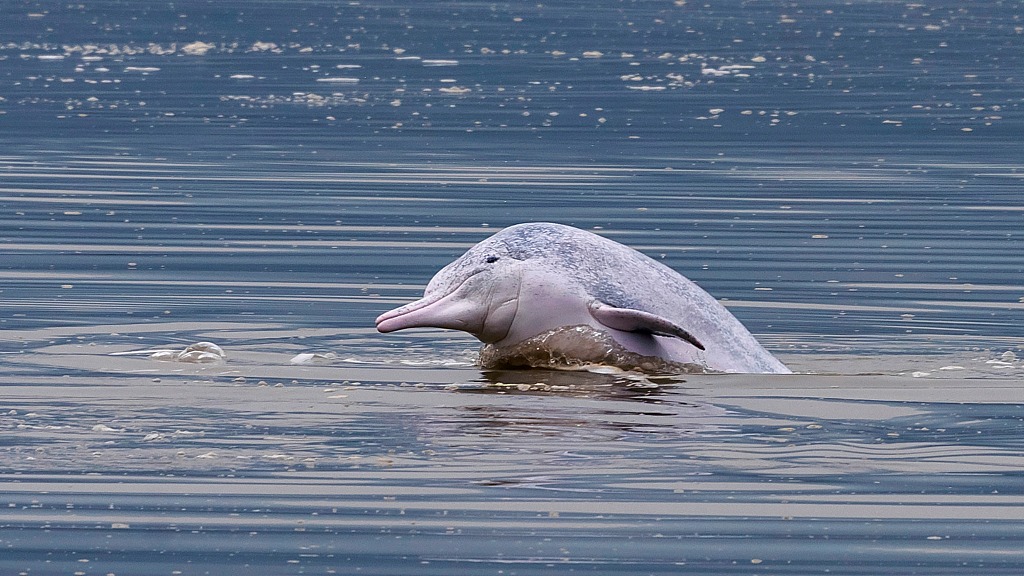
A Chinese white dolphin appears in the waters near Nanwan Village in Xiapu County, southeast China's Fujian Province, on March 1, 2021. /CFP
A Chinese white dolphin appears in the waters near Nanwan Village in Xiapu County, southeast China's Fujian Province, on March 1, 2021. /CFP
Also known as the Indo-Pacific humpback dolphin, this rare aquatic mammal is said to have a friendly nature, with researches revealing that they may look different depending on where they live. Pale grey as calves, their coloration changes as they get older. Those found in the Chinese mainland are mostly relatively white, hence the name the Chinese white dolphin; whilst in Hong Kong, they reportedly have an iconic pink coloring.
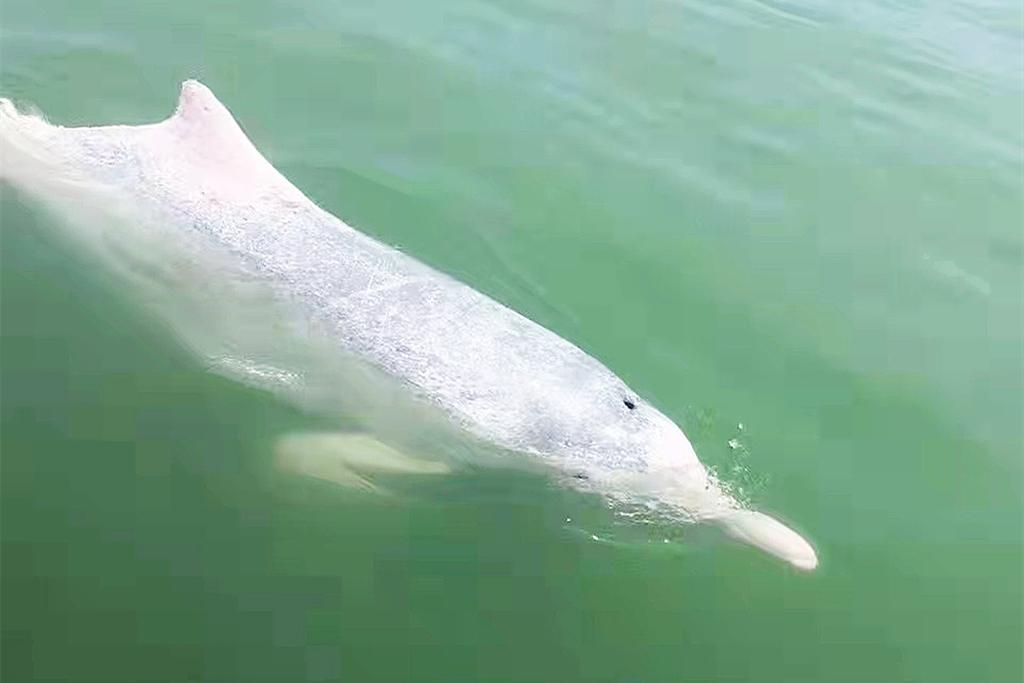
A Chinese white dolphin is photographed in Leizhou bay, south China's Guangdong Province, on April 8, 2022. /CFP
A Chinese white dolphin is photographed in Leizhou bay, south China's Guangdong Province, on April 8, 2022. /CFP
As an endangered species that is under first-class national protection in China, the Chinese white dolphin is listed as "Vulnerable" on the International Union for Conservation of Nature Red List of Threatened Species, which states that "assessment of subpopulation structure has not been well studied in this species, with many different stocks or 'population units' having been hypothesized to occur, without confirmation in most cases."
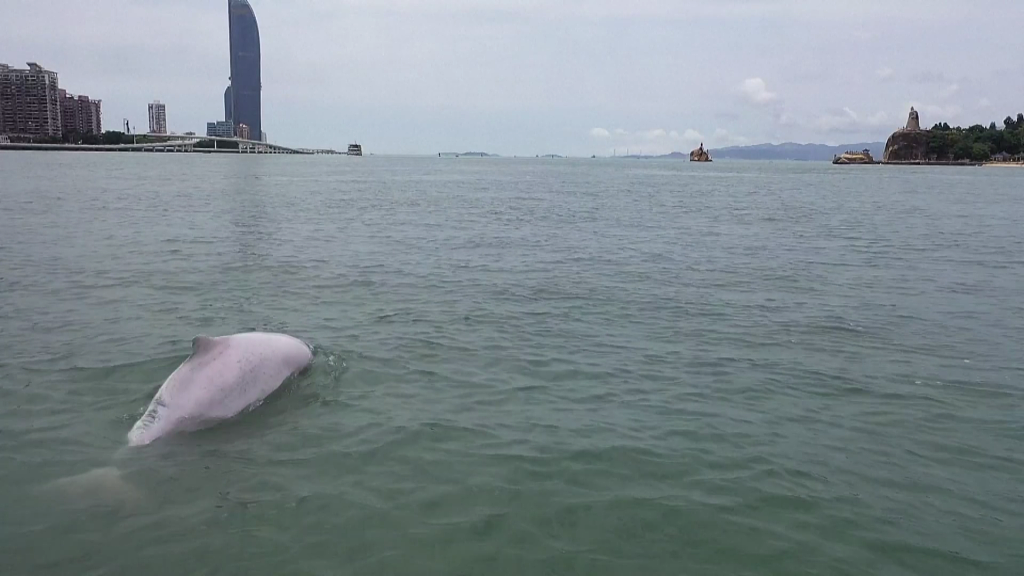
A Chinese white dolphin is photographed in the waters near Gulangyu Island of Xiamen, southeast China's Fujian Province, on May 5, 2023. /CFP
A Chinese white dolphin is photographed in the waters near Gulangyu Island of Xiamen, southeast China's Fujian Province, on May 5, 2023. /CFP
Earlier this year, China's first intelligent monitoring platform for the Yangtze finless porpoise and Chinese white dolphin was put into operation, serving to better protect these two rare mammals.